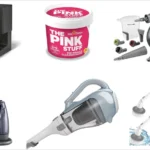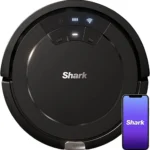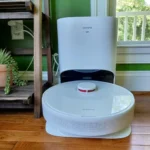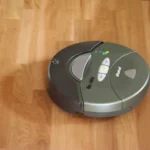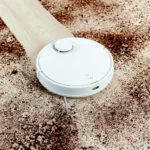Are you tired of high energy bills and looking for ways to reduce your smart vacuum cleaner’s energy consumption? Don’t worry, you’re not alone! Many homeowners struggle to find efficient ways to keep their homes clean without breaking the bank. The good news is that there are several tips and tricks you can implement to save energy without sacrificing cleanliness. In this article, we’ll share 10 tips to reduce energy consumption of your smart vacuum cleaner. From scheduling functions to high-efficiency brushes, we’ve got you covered. Read on to discover how to keep your home clean and your energy bills low.
Tip 1: Use Scheduling Function
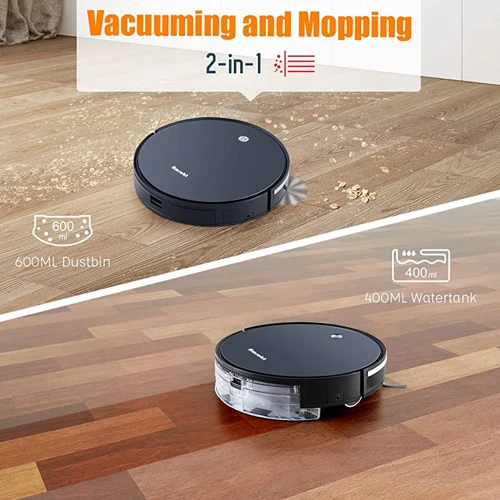
Have you ever thought about reducing energy consumption while keeping your home clean? Here’s where the scheduling function of your smart vacuum comes in handy. With this feature, you can program your vacuum to clean your house automatically at the most convenient time, even if you are not at home. This not only saves your time but also controls your smart vacuum’s energy consumption. To learn more about other eco-friendly features and energy-saving benefits of smart vacuums, check out /eco-friendly-smart-vacuum-features/.
Explanation of Tip 1
One of the easiest ways to reduce energy consumption of your smart vacuum cleaner is to use its scheduling function. This feature allows you to program your vacuum to clean at specific times, so you don’t have to remember to turn it on every time you need it. By using this function, you can ensure that the vacuum only runs when needed, reducing its overall energy consumption.
Not only does using the scheduling function save energy, but it can also save you time and effort. By setting your vacuum to clean while you’re away, you can come back to a clean home without having to lift a finger. This means you can spend more time doing the things you love, and less time cleaning.
Another benefit of using the scheduling function is that it can help extend the life of your vacuum. By reducing the amount of time it runs, you can help prevent wear and tear on the motor and other components. This can save you money on repairs or replacement in the long run.
To implement this tip on your vacuum, simply consult the user manual for instructions on how to set up the scheduling function. Most smart vacuums have an easy-to-use interface that allows you to set up schedules in just a few clicks. Once you have set up the schedule, your vacuum will run at the specified times, keeping your home clean and reducing energy consumption.
By using this energy-saving feature, you can also reduce your carbon footprint and contribute to a greener environment. Using energy-efficient smart vacuums like those with an Energy Star certification or energy-efficient motors can have a significant impact on your energy bills and the environment. Taking care of your smart vacuum with regular maintenance and by following these tips can help you reduce energy consumption and contribute to a healthier world.
How to Implement Tip 1 on Your Vacuum
To implement tip 1 and make use of the scheduling function to reduce the energy consumption of your smart vacuum cleaner, follow these steps:
- Step 1: Read the instruction manual: The scheduling function may vary depending on the model of your smart vacuum cleaner. Read the instruction manual to familiarize yourself with the specific scheduling features of your vacuum.
- Step 2: Choose the right time: Decide on the time when you want your smart vacuum cleaner to start cleaning. It’s best to choose a time when no one is home so that the vacuum can perform its task uninterrupted, thus reducing energy consumption.
- Step 3: Set the schedule: Use the smart vacuum’s scheduling feature to set the desired time and days of the week for cleaning. Ensure that the vacuum’s battery is charged, and it’s not currently cleaning or plugged in when setting the schedule.
- Step 4: Observe the cleaning pattern: Some smart vacuums use sensors to detect any obstacles or drops that can be a hazard. It’s important to observe the cleaning pattern to ensure that the vacuum is not using unnecessary energy by repeatedly cleaning the same spot or getting stuck in tight spaces.
By following these simple steps, you can easily set your smart vacuum cleaner to clean your home only when needed, making it an energy-saving and convenient tool. By implementing tip 1, not only will you be saving energy and reducing your electricity bill, but you will also be contributing to a cleaner environment. With the benefits that an energy-smart vacuum can bring to the average household, making the small adjustment of using scheduling function can really add up and help reduce your carbon footprint while vacuuming.
Tip 2: Use Manual Mode for Spot Cleaning
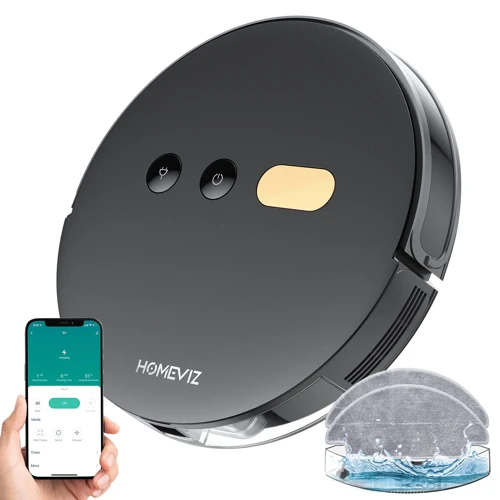
Maintaining a clean home is essential, but this shouldn’t mean sacrificing energy efficiency. One effective way to reduce your smart vacuum cleaner’s energy consumption is to use the manual mode for spot cleaning. This is particularly useful in areas where heavy dirt and debris accumulate, such as near the entrance of your home or under the dining table. By using manual mode, you allow your vacuum to focus only on the areas that require cleaning, thereby reducing its overall energy usage. When implemented alongside other clever techniques, such as proper scheduling and adjusting your power settings, your smart vacuum cleaner can become an eco-friendly tool that keeps your home clean without hurting the environment. To learn more tips for reducing your vacuum’s energy consumption, head over to our article on smart vacuum energy consumption.
Explanation of Tip 2
Using your smart vacuum cleaner in manual mode for spot cleaning is another energy-saving tip. This mode allows you to target specific areas that need cleaning instead of vacuuming the entire house. Spot cleaning is a good option when you need to clean a small mess or an area that gets dirty frequently. For example, if you have pets, you can use the manual mode to clean the area around their feeding station or sleeping area.
Using manual mode can help you save energy and extend the battery life of your vacuum cleaner. Instead of running the vacuum for an extended period, you can clean the specific area quickly and efficiently. As a result, you will consume less power, and the battery will last longer.
Another benefit of using manual mode is reducing wear and tear on your smart vacuum cleaner. While robotic vacuums are sturdy, they are not immune to mechanical failure. Frequent use can result in motor or sensor issues, which can be expensive to repair. By spot cleaning specific areas, you can extend the lifespan of your vacuum and save money in the long run.
Using the manual mode of your smart vacuum cleaner is not only beneficial for energy savings and cost savings. It can also reduce the environmental impact of your cleaning routine. By focusing on specific areas instead of the entire house, you are reducing the energy needed for cleaning, which translates to a lower carbon footprint. Some smart vacuums are made from eco-friendly materials, and the longer you can extend their use, the better it is for the environment.
To sum up, using manual mode for spot cleaning is a simple yet effective way to save energy and extend the life of your smart vacuum cleaner. Additionally, using this mode can reduce the impact on the environment, making it a win-win situation for both you and the planet.
How to Implement Tip 2 on Your Vacuum
Implementing Tip 2 on your smart vacuum cleaner can help reduce energy consumption and extend the life of your device. Here are the steps to follow:
- Identify the spot cleaning function on your vacuum: Look for the spot cleaning button on your vacuum cleaner; it is usually marked as a small button that looks like a cross.
- Activate the spot cleaning mode: Once you’ve identified the spot cleaning function, simply press the button to activate the mode.
- Place the vacuum on the spot that needs cleaning: Position your smart vacuum cleaner on the spot on the floor which requires cleaning.
- Activate the vacuum: Turn your vacuum cleaner on and let it do the work. Smart vacuums are designed to sense dirt and debris, so it will clean the area for as long as it detects dirt.
- Turn off the spot cleaning mode once finished: Once the cleaning is complete, make sure to turn off the spot cleaning mode.
It is important to note that Tip 2 should not be used as a replacement for regular cleaning. However, using spot cleaning mode where necessary can save energy and ultimately help prolong your vacuum’s lifespan. For more information on the benefits of energy-saving smart vacuums, check out our article on energy-saving smart vacuum benefits. It is also important to consider the environmental impact of using a smart vacuum cleaner, which we discuss in detail in our article on smart vacuum’s environmental impact.
Tip 3: Use Eco Mode
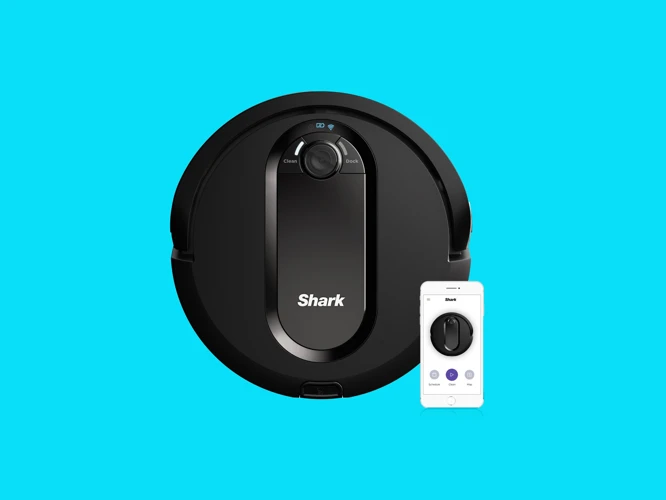
Are you looking for a quick and easy way to reduce energy consumption on your smart vacuum cleaner? Look no further than Eco mode. By enabling this mode, you can save energy and reduce your carbon footprint without sacrificing cleaning quality. But how exactly does Eco mode work, and how can you use it on your own smart vacuum cleaner? Let’s dive in and explore this energy-saving tip!
Explanation of Tip 3
Reducing energy consumption is not just about using your vacuum cleaner less, it is also about using it more efficiently. This is where Tip 3 comes into play – Use Eco Mode.
Eco Mode is a power-saving feature that many Smart vacuum cleaners come equipped with. When activated, the vacuum cleaner will use less energy and clean at a slower rate. This will not only save energy, but it also extends the life of your vacuum.
By using Eco Mode, your vacuum will run at a lower power setting, consuming less energy, and hence, operating more efficiently. This can result in a slightly longer cleaning routine, but it will decrease the amount of energy used during each session.
You may be worried that Eco Mode won’t provide a thorough enough cleaning, but fear not. This mode is still powerful enough to ensure that your floors are cleaned effectively, but it may take a little longer. Some vacuum cleaners also have a Turbo Eco mode which is ideal for cleaning carpets and areas with more debris. By using different power modes for different flooring types and levels of dirt, you can optimize your cleaning routine for energy efficiency.
Making this change is a simple way of reducing the energy consumption of your Smart vacuum cleaner. Not only that, but it can also help prolong the life of your vacuum cleaner, which could save you money in the long run.
How to Implement Tip 3 on Your Vacuum
Implementing Tip 3 on your vacuum is a simple process that can greatly reduce its energy consumption. Here are the steps you can take:
| Step 1: | Locate the Eco Mode setting on your vacuum. It may be labeled as such, or it may be a symbol such as a tree or a leaf. |
| Step 2: | Press the Eco Mode button or switch to activate it. This will adjust the suction power of your vacuum to a lower setting, which uses less energy. |
| Step 3: | Start vacuuming your home as you normally would, but with the Eco Mode setting enabled. |
| Step 4: | Take note of the difference in battery life or energy consumption between using Eco Mode and using your vacuum on its regular setting. You should see a significant reduction in energy usage with Eco Mode enabled. |
By using Eco Mode, you can reduce your vacuum’s energy consumption without compromising its cleaning performance. This setting is particularly useful for routine cleaning or when you don’t need the maximum suction power of your vacuum. Give it a try and see how much energy you can save!
Tip 4: Keep Filters Clean
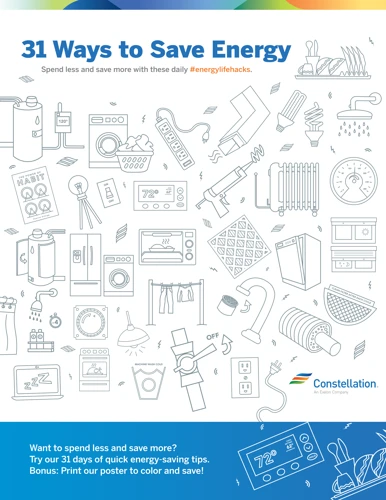
One of the most important aspects of maintaining a smart vacuum cleaner is ensuring that its filters are clean. Dirty filters can significantly reduce the device’s suction power, making it less effective at picking up dirt and debris. It may be perplexing to figure out how to clean your vacuum’s filters, but with the right tools and techniques, it can be a straightforward task. In this section, we’ll explain why it’s important to keep your filters clean and provide you with step-by-step instructions on how to do so.
Explanation of Tip 4
One important tip to reduce energy consumption of your smart vacuum cleaner is to keep its filters clean. It may not seem like an obvious energy-saving tactic, but clogged filters force the vacuum to work harder than necessary, draining its battery life and increasing power consumption. Regularly cleaning the filters is a simple and effective way of extending the lifespan of your vacuum and reducing its energy consumption.
There are different types of filters in a smart vacuum cleaner including traditional HEPA filters, foam filters and mesh filters. Depending on the model of your vacuum cleaner, the filters may be removable or washable. Some vacuum cleaner models may require complete replacement of the filter after a certain period of use.
To determine the appropriate cleaning frequency for your vacuum’s filter, check the manufacturer’s instructions. In general, it is essential to clean the filters at least once per month. However, if you have pets or you vacuum frequently, then you may need to clean them more often.
Cleaning the filters of your vacuum is a straightforward process that requires very little effort. Simply remove the filter from your vacuum and clean it with running water, then let it dry before putting it back into the vacuum cleaner. If your vacuum has a washable filter, then you can use a mild detergent to remove dirt and debris from the filter. After washing, allow the filter to dry completely before installing it back into the vacuum.
Keeping your vacuum’s filters clean not only saves energy, but it also improves the overall indoor air quality by trapping dust and allergens. It’s essential to note that if the filters are not cleaned regularly, they can become ineffective, which can lead to reduced vacuum performance, increased power consumption, and shorter battery life. Maintaining your vacuum’s filters can save you money and help protect your indoor air quality.
Below is a summary of the tips to reduce energy consumption of your smart vacuum cleaner by keeping your filters clean:
| Tips | Explanation |
| Clean Filters Regularly | Reduce energy consumption of your smart vacuum cleaner by keeping filters clean to improve airflow and vacuum performance. |
| Check Manufacturer’s Instructions | Refer to the manufacturer’s instructions for the proper cleaning frequency. |
| Remove and Wash Filters | Remove the filter and clean with running water or mild detergent, then let it dry completely before reinstalling it. |
How to Clean Your Vacuum’s Filters
One of the simplest ways to reduce energy consumption of your smart vacuum cleaner is to keep the filters clean. A dirty filter makes the vacuum’s motor work harder, which means it will use more energy to perform the same task. Cleaning your vacuum’s filters is easy and doesn’t take much time. Here’s how you can do it:
Step 1: Turn off the vacuum cleaner and unplug it from the power source.
Step 2: Locate the filter by consulting your vacuum cleaner’s manual. Some vacuums have filters in the dustbin, while others have them in the motor compartment.
Step 3: Remove the filter from the vacuum cleaner. If the filter is washable, wash it with soap and warm water. Some filters are not washable and need to be replaced. Check the manual for more information.
Step 4: Rinse the filter thoroughly and allow it to dry completely before putting it back in the vacuum cleaner. Do not put a wet or damp filter back into the vacuum cleaner as it can damage the motor.
Step 5: While you have the filter removed, check for any other parts that may be dirty or clogged. Clean them as needed before reassembling the vacuum cleaner.
Keeping your vacuum’s filters clean not only reduces energy consumption but also helps to prolong the life of your vacuum cleaner. Make sure to clean your vacuum’s filters regularly to keep your machine running efficiently.
| Step Number | Instructions |
|---|---|
| 1 | Turn off the vacuum cleaner and unplug it from the power source. |
| 2 | Locate the filter by consulting your vacuum cleaner’s manual. Some vacuums have filters in the dustbin, while others have them in the motor compartment. |
| 3 | Remove the filter from the vacuum cleaner. If the filter is washable, wash it with soap and warm water. Some filters are not washable and need to be replaced. Check the manual for more information. |
| 4 | Rinse the filter thoroughly and allow it to dry completely before putting it back in the vacuum cleaner. Do not put a wet or damp filter back into the vacuum cleaner as it can damage the motor. |
| 5 | While you have the filter removed, check for any other parts that may be dirty or clogged. Clean them as needed before reassembling the vacuum cleaner. |
Tip 5: Use High-Efficiency Brushes
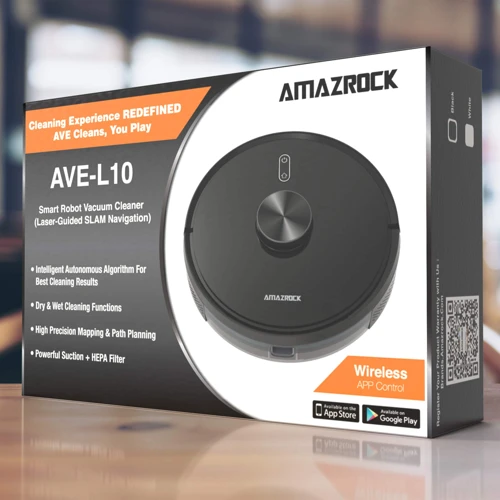
Upgrading your vacuum cleaner with high-efficiency brushes can make a significant impact on its energy consumption. While conventional vacuum brushes may wear out quicker and require more power to function properly, high-efficiency brushes are designed to last longer and use less energy. So, if you’re looking to reduce your overall energy consumption and save money on your electricity bill, let’s dive into the benefits of upgrading to high-efficiency brushes.
Explanation of Tip 5
One effective way to reduce energy consumption of your smart vacuum cleaner is to use high-efficiency brushes. These brushes are designed to pick up more dirt and debris with each pass, which means your vacuum won’t have to work as hard to get your floors clean, ultimately reducing energy usage.
High-efficiency brushes typically have bristles that are made of sturdy, synthetic materials that can withstand wear and tear. They may also have features like staggered bristle lengths that are designed to pull dirt and debris from both carpet and hard floors.
Investing in high-efficiency brushes is a great way to ensure your smart vacuum cleaner is working as effectively and efficiently as possible. Additionally, these brushes are often more durable than traditional brushes, so you may not need to replace them as frequently. This will not only save you energy, but also money in the long run, making it a win-win situation for you and the environment.
To find high-efficiency brushes for your specific smart vacuum cleaner, start by checking with the manufacturer to see if they offer any accessories or replacement parts. You can also check online retailers like Amazon or Best Buy for compatible options. Be sure to read reviews and compare pricing to make sure you are getting the best deal on a quality product.
Using high-efficiency brushes is a simple yet effective way to reduce energy consumption of your smart vacuum cleaner, while also maximizing its cleaning performance.
Where to Find High-Efficiency Brushes for Your Vacuum
When it comes to finding high-efficiency brushes for your smart vacuum cleaner, there are different options to choose from. Some of the top places to find these brushes include:
- Manufacturer’s Website: One of the best places to find high-efficiency brushes for your vacuum cleaner is from the manufacturer’s website. They will typically offer a range of compatible options that will specifically work with your device. Be sure to check the product specifications to ensure that the brush will work seamlessly with the vacuum.
- Online Retailers: Another avenue to explore is online retailers. There is no shortage of online sites that offer a range of vacuum parts, including high-efficiency brushes. Amazon and eBay are two popular sites that offer a wealth of options, but it’s important to read reviews and check the seller’s reputation to ensure that the product is legitimate and will work for your vacuum.
- Big Box Stores: The big box stores that sell vacuum cleaners may also offer a range of high-efficiency brushes for different vacuum models. Stores like Walmart, Best Buy, and Home Depot are a few examples where you can check for these brushes on the shelves or on their websites.
- Specialized Vacuum Stores: For a more specialized approach, you can visit a vacuum store that offers a range of different vacuum models and parts. These stores usually have a range of parts in stock, and the staff can help you find a high-efficiency brush that will work for your particular vacuum cleaner.
Keeping your vacuum cleaner in good working order is essential for it to operate efficiently and effectively. By investing in high-efficiency brushes, you can ensure that it is functioning at its best and reducing the overall energy consumption. So, take some time to research and find the right brush for your vacuum cleaner.
Tip 6: Don’t Overcharge Your Vacuum
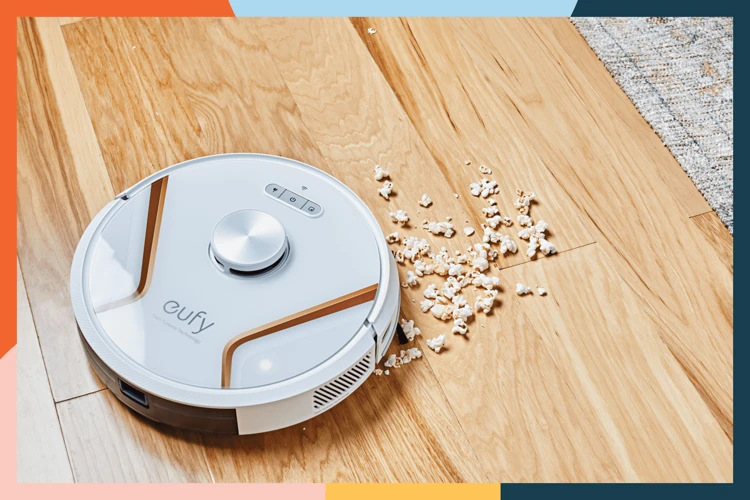
When it comes to getting the most out of your smart vacuum cleaner’s battery life, it’s important to strike a balance between using it enough to keep your floors clean and avoiding overcharging it. Overcharging your vacuum can lead to decreased battery life and even damage to the vacuum’s electrical components. So, how do you ensure that you’re keeping your vacuum charged without overdoing it? Here are some tips to help you get the most out of your vacuum’s battery life.
Explanation of Tip 6
One of the tips to reduce the energy consumption of your smart vacuum cleaner is to avoid overcharging it. Overcharging can not only lead to excess energy usage but also cause harm to the battery, resulting in shorter battery life. Here are some reasons why you should be mindful of overcharging your vacuum cleaner:
- Battery damage: Overcharging can cause irreversible damage to the battery, leading to reduced battery life and making it less efficient in the long run.
- Wasted energy: When you overcharge your vacuum cleaner, it will continue to consume energy even when its battery is already full, leading to unnecessary energy waste and higher electricity bills.
- Safety hazards: Overcharging can pose a risk of fire, as the battery may become overheated and catch fire.
That being said, it’s crucial to keep an eye on your vacuum’s battery life and unplug it from the charger once it’s fully charged. Most smart vacuums have an indicator light that signals when the battery is fully charged, and it’s a good idea to set a reminder to unplug your vacuum once it’s reached maximum charge. By being mindful of your vacuum’s charging routine, you can prolong its battery life, reduce energy waste, and keep your home safe from potential electrical hazards.
How to Check Your Vacuum’s Battery Life
To check the battery life of your smart vacuum cleaner, follow these steps:
| Step 1: | Locate the battery indicator on your vacuum cleaner |
| Step 2: | Press the power button to turn on the vacuum cleaner |
| Step 3: | Refer to the user manual to determine the meaning of the battery indicator lights |
| Step 4: | Check the battery indicator lights to see how much power is left in the battery |
| Step 5: | If the battery is low, plug the vacuum cleaner into the charging station to recharge |
It is important to check the battery life of your smart vacuum cleaner regularly to ensure that it is operating at peak efficiency. Over time, the battery life of your vacuum cleaner may begin to degrade, leading to shorter run times and less effective cleaning. By monitoring the battery life and recharging the vacuum as needed, you can help prolong the life of the battery and keep your smart vacuum running smoothly for years to come.
Tip 7: Don’t Overuse the Boost Function
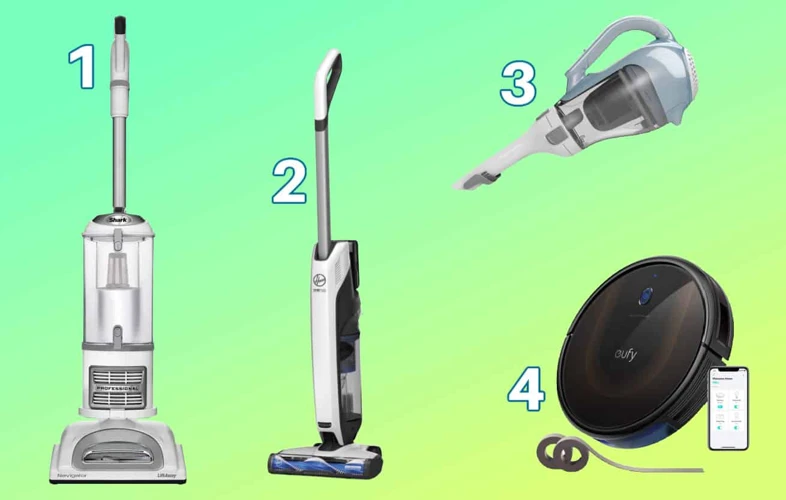
You may be tempted to use the Boost function on your smart vacuum cleaner frequently to ensure a spotless home, but it’s important to keep in mind that this feature comes at a cost. Boost mode consumes more energy than regular cleaning modes, which can shorten the battery life of your vacuum and increase your energy bills. So, how can you use the Boost function sparingly and only when necessary? Let’s explore some tips and tricks to help you make the most of this feature without putting a strain on your vacuum’s energy consumption.
Explanation of Tip 7
Keeping your smart vacuum cleaner’s Boost function in check can help reduce its energy consumption. The Boost function is designed to increase suction power, but it also uses up more energy. If you overuse the Boost function, you may decrease your smart vacuum cleaner’s battery life and waste energy. To prevent this from happening, use the Boost function sparingly, only when necessary.
Instead of relying on the Boost function for every cleaning session, try using a lower power setting or manually changing the vacuum’s power level. This will not only reduce energy consumption but also prolong the life of your vacuum’s battery. Remember, the Boost function should only be used for cleaning the toughest spots or areas with high traffic.
To ensure you’re not overusing the Boost function, consider creating a cleaning plan. Identify areas of the house with high traffic or high levels of dirt and make a note to use the Boost function in these areas only. Additionally, if you have a smart vacuum cleaner with mapping features, use it to navigate your home and avoid cleaning an area more than once.
By using the Boost function sparingly, you can reduce your smart vacuum cleaner’s energy consumption while still maintaining a clean home. Don’t forget to keep an eye on your vacuum’s battery life to ensure it’s fully charged before each cleaning session.
How to Use the Boost Function Sparingly
Boost mode is a great feature that can help your smart vacuum cleaner tackle tougher messes with ease. However, it’s important to use this function sparingly to conserve energy. Here are some tips on how to do so:
- Identify the areas in your home that typically require boost mode, such as high-traffic areas or heavily soiled spots.
- Plan your cleaning route in advance and use boost mode only when you reach these specific areas.
- Remember: Boost mode uses more power and drains your vacuum’s battery faster, so only use it when you really need it.
- If you have multiple levels in your home, only use boost mode on the level you’re currently cleaning. Switch to standard mode on other levels to conserve energy.
- Tip: Some smart vacuums have a “Turbo” mode that combines boost mode with high-efficiency brushes for maximum cleaning power. Use this mode even more sparingly, and only on the most stubborn messes.
- Finally, once your vacuum has finished cleaning, take the time to manually spot-clean any persistent messes using boost mode. This will reduce the frequency of boost mode usage during future cleaning sessions.
By following these simple tips, you can make the most of your smart vacuum cleaner’s boost mode while also conserving energy and prolonging the life of your vacuum’s battery. Keep in mind that boost mode should always be used as a supplement to regular cleaning, not as the sole method of cleaning your floors.
Tip 8: Vacuum One Room at a Time
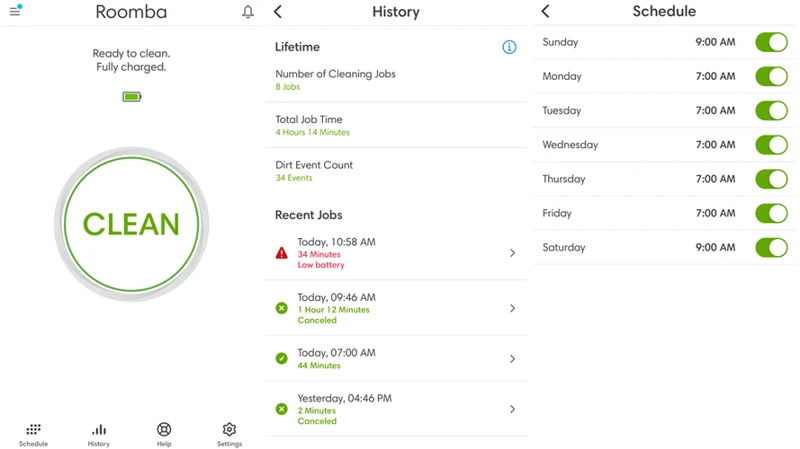
If you find yourself wandering aimlessly with your smart vacuum cleaner, bumping into walls and furniture, you may be wasting energy and not cleaning efficiently. One solution is to vacuum one room at a time. Focusing on one area at a time can help conserve energy while also ensuring a more thorough cleaning. In this tip, we’ll explore the benefits of this approach and how to plan your vacuuming route to make the most of it.
Explanation of Tip 8
Vacuuming one room at a time is a great way to reduce energy consumption and optimize cleaning efficiency. This tip ensures that the vacuum only works where it’s necessary, as opposed to aimlessly roaming around your home, using unnecessary energy.
By focusing on one room at a time, you can ensure that every area of the room is cleaned thoroughly with the most energy-efficient path possible, increasing the chance of picking up all the dirt, dust, and debris that might have otherwise gone unnoticed.
You’ll spend less time and energy cleaning when you use this method as there is no need to go through every part of your home multiple times.
Planning ahead of time is key when it comes to cleaning one room at a time. Decide the order in which you want to clean each room in, and try to avoid doubling back. This way, you can minimize the amount of energy that your vacuum uses while maximizing its cleaning effectiveness.
You can also try designating specific days for cleaning each room, so you’re not working too much, too long. This will not only reduce your energy consumption but also keep your cleaning organized and make it easier to keep track of when you last cleaned each room.
Consider also clearing clutter and debris before starting your vacuum, so you don’t waste time on small things that the vacuum can’t pick up, like toys or paper.
Using this simple tip will make the most of your energy-efficient smart vacuum cleaner while reducing your ecological footprint.
| Advantages | Disadvantages |
|---|---|
| Increases cleaning efficiency. | Requires planning. |
| Reduces energy consumption significantly. | Requires organization and discipline. |
| Saves time and effort. | May be difficult to stick to if you have a hectic schedule. |
How to Plan Your Vacuuming Route
Planning your vacuuming route can help reduce the energy consumption of your smart vacuum cleaner. Here are some tips to create an efficient cleaning plan:
| Step 1: | Declutter the Room |
| Before vacuuming, remove any objects from the floor that could obstruct the vacuum’s path, such as toys, shoes, or small furniture. | |
| Step 2: | Map Out the Room |
| Take a few minutes to study the room and plan out the areas where your vacuum should focus on. For example, start with the high-traffic areas where dust and debris are most concentrated, and move to the edges of the room where dirt accumulates. | |
| Step 3: | Divide the Room into Sections |
| Breaking the room into smaller sections can make cleaning more manageable and helps ensure that the entire space is fully cleaned. Consider dividing the room into quadrants and begin cleaning with the section furthest from the door and work your way out. | |
| Step 4: | Develop a Back-and-Forth Motion |
| Developing a back-and-forth motion in each section can also help you minimize the vacuum’s energy consumption. Start with one side of the room, moving the vacuum in straight-line paths, and then start in a parallel line moving away, amounting fewer steps the vacuum needs to make |
By following these simple steps in planning your vacuuming route, you can maximize the efficiency of your smart vacuum cleaner while reducing the energy consumption and maintaining a clean home.
Tip 9: Use a Lower Power Setting
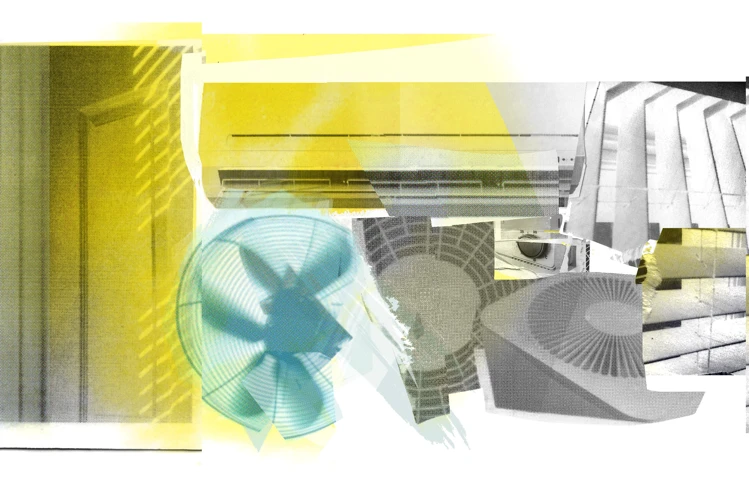
When it comes to maximizing the efficiency of your smart vacuum cleaner, it’s important to consider the power setting you’re using. While it may be tempting to crank up the suction to clean the floors faster, this can actually lead to unnecessary energy consumption. That’s why it’s worth exploring the benefits of using lower power settings on your vacuum, which can help reduce energy usage and extend the battery life without compromising the cleanliness of your home. Let’s take a closer look at why this tip matters and how you can implement it effectively.
Explanation of Tip 9
Switching to a lower power setting on your smart vacuum cleaner is a simple but effective way to reduce its energy consumption. Lowering the power setting will reduce the suction power of your vacuum, lowering the amount of energy it uses. This is particularly useful for routine cleaning tasks or maintenance touch-ups, as your home may not require full suction power to pick up minor debris.
Reducing your smart vacuum’s power setting can help you:
- Extend battery life and vacuum runtime.
- Reduce motor wear and tear, extending the vacuum’s lifespan.
- Save energy and reduce your overall energy costs, part of a green lifestyle.
Using lower power settings generates less noise, making it a good option for cleaning during daytime without disturbing others. Many smart vacuums come with eco modes, similar to Tip 3, that are designed to use less power while providing adequate cleaning.
However, it’s important to remember that lowering the power setting does not replace deep cleaning with maximum suction power, especially when dealing with deeply embedded debris. Use higher power settings for first-time deep cleaning or whenever necessary, and use lower power settings for regular cleaning.
By reducing the power settings on your smart vacuum, you’ll not only get an extended runtime and a quieter cleaning process, but you’ll also save energy and reduce your carbon footprint.
How to Adjust Your Vacuum’s Power Setting
To adjust your vacuum’s power setting, follow these simple steps:
- Locate the power setting button on your vacuum. It may be labeled as “power,” “suction,” or have a symbol of a fan with different speed settings.
- Press the button to activate the different power settings.
- Use the lowest power setting that effectively cleans your floors. Using a higher power setting than necessary will consume more energy.
- If you have different types of flooring in your home, such as hardwood and carpet, adjust the power setting for each type accordingly. Hardwood floors typically require less power than carpeted areas.
- Experiment with different power settings to find the one that provides optimal cleaning performance while using the least amount of energy.
By adjusting your vacuum’s power setting, you can significantly reduce the amount of energy it consumes while cleaning your home. Lower power settings are also quieter, which can make vacuuming a more pleasant experience. Remember, using a lower power setting does not mean sacrificing cleanliness – it just means using only the power needed to get the job done.
Tip 10: Keep Your Home Tidy
When it comes to reducing energy consumption of your smart vacuum cleaner, there’s one tip that may seem obvious but is often overlooked – keeping your home tidy. A cluttered space not only makes it harder for your vacuum to do its job efficiently, but it also leads to more frequent vacuuming which in turn increases energy usage. In this section, we’ll explore how you can keep clutter and dust levels under control to reduce the frequency of vacuuming and save energy in the long run. Let’s dive in!
Explanation of Tip 10
Tip 10: Keep Your Home Tidy
One of the easiest ways to reduce energy consumption of your smart vacuum cleaner is to keep your home tidy. This may sound like a no-brainer, but it’s surprising how much energy can be wasted vacuuming up unnecessary clutter and dust.
By keeping your home organized and decluttered, you’ll minimize the amount of debris that your vacuum has to clean, thus reducing the amount of energy it consumes. Not only that, but a tidy home will also help your vacuum maneuver around furniture and other obstacles more efficiently.
To keep your home tidy, consider implementing a few simple strategies. For example, make sure everything in your home has a designated place so it doesn’t end up cluttering your floors. You can also invest in storage solutions, such as bins and baskets, to keep clutter at bay.
Another strategy is to make cleaning a part of your daily routine. Spend a few minutes each day wiping down surfaces, putting away items and sweeping up debris. This will help prevent buildup and make vacuuming less of a chore.
Remember, a clean home not only benefits your vacuum’s energy consumption, but it also benefits your overall health and well-being. So, take the time to organize and declutter your home to reduce energy consumption and enjoy a healthier living environment.
Table: Benefits of a Tidy Home
| Benefits | Description |
| Less Energy Consumption | Reduces energy consumption of your smart vacuum cleaner. |
| Better Efficiency | Makes it easier for your vacuum to maneuver around furniture and other obstacles. |
| Healthier Environment | Prevents buildup of dust and other allergens, leading to a healthier living environment. |
| Reduced Stress | A tidy home can reduce stress and promote relaxation. |
| Improved Focus | Eliminates distractions and makes it easier to concentrate. |
So not only will you reduce the energy consumption of your smart vacuum cleaner, but you’ll enjoy a cleaner, healthier, and more relaxing living environment.
How to Keep Clutter and Dust Under Control to Reduce Vacuuming Frequency
Keeping clutter and dust under control is essential for reducing the frequency of vacuuming. Here are some tips to help you achieve a cleaner, less cluttered home:
| Tip | Description |
| 1 | Use storage solutions to keep items off the floor and furniture surfaces. |
| 2 | Incorporate daily cleaning into your routine to prevent debris buildup. Wipe down surfaces, sweep regularly, and do a quick tidy up each day. |
| 3 | Implement a no shoes policy, as shoes are a major source of dirt and dust. |
| 4 | Invest in a good quality doormat and encourage family and guests to wipe their feet before entering your home. |
| 5 | Use vacuum attachments to clean hard-to-reach areas, such as baseboards, windowsills, and ceiling fans. |
| 6 | Keep pets groomed and brushed to reduce shedding and dander. |
| 7 | Use air purifiers to remove allergens and pollutants from the air. |
| 8 | Avoid using harsh chemical cleaners and instead opt for eco-friendly cleaning products to reduce chemical buildup. |
By employing these tips, you can significantly reduce the amount of dust and debris in your home, which in turn will reduce the frequency of vacuuming needed. Additionally, you will be improving the overall cleanliness and air quality in your home, making it a healthier and more pleasant environment for you and your family.
Conclusion
In conclusion, reducing energy consumption of your smart vacuum cleaner is a smart choice for both your wallet and the environment. By following the tips outlined in this article, you can ensure that your vacuum is running efficiently and effectively while also minimizing its impact on the planet.
From using scheduling function and eco mode to keeping filters clean and vacuuming one room at a time, there are plenty of simple steps you can take to reduce the amount of energy your vacuum uses. Additionally, investing in high-efficiency brushes and avoiding overcharging or overusing the boost function can also help extend the life of your vacuum and reduce energy waste.
And, of course, don’t forget the importance of maintaining a tidy home to reduce the need for frequent vacuuming. By limiting clutter and dust buildup, you can reduce the amount of time your vacuum spends running and further minimize its energy usage.
Overall, a few small changes to your vacuuming routine can make a big difference in both your energy bill and your environmental impact. So, give these tips a try today and enjoy the benefits of a more energy-efficient home cleaning routine.
Frequently Asked Questions
Can I schedule my smart vacuum cleaner to run at specific times?
Yes, most smart vacuum cleaners have a scheduling function that allows you to set specific times for cleaning.
What is manual mode on a smart vacuum cleaner?
Manual mode allows you to control the vacuum cleaner and guide it to clean specific spots or areas within your home.
What does eco mode mean on a smart vacuum cleaner?
Eco mode is a power-saving mode that reduces the vacuum cleaner’s energy consumption, making it more efficient and longer-lasting.
How often should I clean my vacuum’s filters?
You should clean your vacuum’s filters at least once a month to ensure optimal suction power and energy efficiency.
Can I replace my vacuum’s regular brushes with high-efficiency brushes?
Yes, high-efficiency brushes are often available as an upgrade for specific models of vacuum cleaners.
Is it bad to overcharge my smart vacuum cleaner?
Overcharging your vacuum can reduce its battery life and potentially cause damage to the device, so it’s best to keep an eye on the charging time and unplug it once it’s fully charged.
What is the Boost function on a smart vacuum cleaner?
The Boost function increases the vacuum’s suction power for a more thorough cleaning, but it also consumes more energy, so it should be used sparingly.
Why should I vacuum one room at a time?
Vacuuming one room at a time helps you save energy and time, as well as giving you a better idea of how much cleaning your home needs.
What power setting should I use on my vacuum?
The power setting will depend on the type of flooring and the amount of dirt and debris in your home. Generally, a lower power setting can be used to save energy without sacrificing cleaning quality.
How can keeping my home tidy reduce energy consumption?
A tidy home with less clutter and dust means that your vacuum cleaner won’t have to work as hard or as long to clean, reducing its energy consumption and extending its lifespan.

